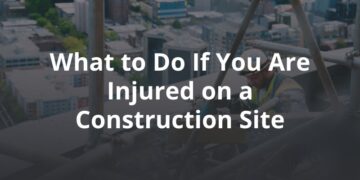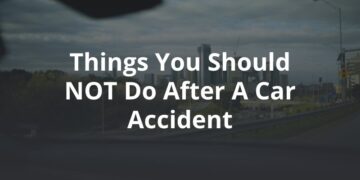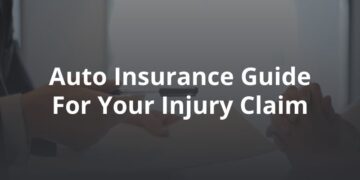Texas is booming again. Unfortunately, that boom can have some unwelcome consequences. An investigation by independent technology news site The Information found that there were 53 serious Amazon truck accidents between April 2018 and April 2021, with 14 deaths and 60 catastrophic injuries.
Of the 53 accidents that are known to have happened on the roadways involving Amazon truck drivers, many of these accidents have happened in Texas, largely clustered around major Amazon hubs in Houston, DFW, and San Antonio.
Unfortunately, it is likely that the number is much higher, but with Amazon’s high rates of non-employee drivers, it is difficult to know exactly how many more accidents may have involved truck drivers working for Amazon indirectly.
Just like their familiar blue vans, accidents involving drivers delivering Amazon goods are everywhere. Read on for more information about what you can do if you are hit by an Amazon truck.
Why Are Amazon Truck Accidents So Common?
Amazon truck accidents are notable because of the sheer number of drivers on the road as well as a system of policies and practices that encourages dangerous behavior and works to avoid accountability.
While Amazon’s ballooning success is not new, Forbes reports the corporate giant delivered 2.3 billion more of its own packages in 2020 than the previous year, driving its revenue up 38% from 2019 to 2020.
While Amazon has historically tried to shield itself from any responsibility when it comes to their safety record by contracting with third-party carriers, they are reported to keep the pressure on at all times.
Amazon tracks drivers’ locations, speeds, braking, acceleration, and more,” largely to ensure that drivers stay on schedule. With the scope of work available to companies and drivers who carry Amazon packages, the motivation to stay on good terms is high.
This motivation can lead the freight companies who contract with Amazon to act negligently, especially with regard to regular vehicle maintenance and driver error. A 2007 Federal Motor Carrier Safety Administration (FMCSA) analysis of large truck accidents that resulted in either fatalities or injuries found that there were three major types of events that contributed to these accidents:
- Running out of the travel lane
- Losing control of the vehicle
- Crashing into another vehicle from behind
An analysis of news articles about Amazon truck accidents demonstrates these same kinds of problems, mainly caused by driver fatigue and inattention. Amazon’s very logistical model requires drivers to make a number of deliveries in a demanding period of time, often while being bombarded with notifications, directions, and messages about efficiency.
Amazon apps are said to have less-than-stellar navigation, which means drivers may be toggling between their preferred navigation app and their delivery instructions.
Still, it’s not just an increase in large trucks on the highways that is the problem. In 2020, the FMCSA announced its plans to investigate the increase of “last-mile” crashes involving Amazon goods.
The last-mile problem is not specific to Amazon, but Amazon is particularly vulnerable to it as a result of its core delivery structure. Just look at any Texas roadway and see an influx and both Amazon-branded and unbranded delivery vehicles.
How Many People Have Been Killed by Amazon Drivers?
Unfortunately, Amazon trucks and vans have been responsible for a number of deaths. Amazon’s business model relies heavily on last-mile logistics — the final steps of a delivery — which it contracts out under its Delivery Service Partner program and independent contractors like Amazon Flex drivers.
Because the final leg of a delivery involves so many stops and in a tight squeeze, it’s incredibly expensive, labor-intensive, and challenging. This can also make it dangerous.
Instead of relying on existing carriers like USPS, UPS, or FedEx, Amazon developed the Delivery Service Partner program in 2018. The DSP program, Amazon said, would give people an opportunity to earn up to $300,000 a year with startup costs of around $10,000.
DSP owners are not required to have experience in either transportation or logistics and will be expected to manage a fleet of 20-40 vans daily after the three-week training period.
While the drivers are employed by the DSPs and not Amazon, it is Amazon that determines the delivery schedules, tracks the drivers. An ongoing lawsuit against Amazon Logistics alleges that one delivery van operating was driving nearly 70 miles per hour when it rear-ended a Georgia family, leaving a 24-year-old aspiring doctor with life-altering brain and spinal injuries.
Amazon is not the only delivery service to have an unacceptable number of accidents, and they are not the only company to operate under this kind of “franchise” model.
However, Amazon’s combination of high-volume, high-pressure practices with a low risk of accountability means there are many opportunities for mistakes along the way to meeting customer demands.
Working conditions and management practices of DSPs vary depending upon the employer, and Amazon has a history of engaging less-than-reputable businesses.
In one high-profile fatality lawsuit, the Amazon driver involved in the accident was employed by a company called Impax, a company found to have a long list of bad behavior, including failure to pay taxes, missed insurance payments, and a CEO with a long history of felony charges.
In another tragic case, Johnathon Hearn, a driver delivering Amazon goods was struck and killed while walking along the highway after suffering what appears to have been a mental health crisis.
After a string of behaviors seemingly connected to his posttraumatic stress disorder, Texas state troopers called his employer, Amazon DSP Triumph Logistics, reported that it was unsafe for him to drive.
After picking him up, his employer signed him back in to deliver under another driver’s name and put him back out on the road. His mental state continued to deteriorate, and he was killed.
Why Are Amazon Truck Accidents So Devastating?
Being injured in any kind of accident is devastating, and Amazon truck accidents are no different. An accident with a large or even mid-size commercial vehicle can result in catastrophic injuries or even death.
Commercial vehicles can easily crush the occupants of smaller vehicles, which means they will be the ones absorbing most of the impact. Moreover, many accidents with commercial trucks happen on highways, at high speeds, which can make injuries worse.
Large trucks weigh 80,000 pounds, so it should come as no surprise that these vehicles are still inherently difficult to maneuver, especially in an emergency situation. Here’s why:
- Difficulty stopping or turning. It takes longer to accelerate and to come to a complete stop for an 18-wheeler, and sudden braking can even cause the truck to jackknife, which can create additional dangers for the truck driver and others on the road.
- Blind spots. There are blind spot danger zones all around an 18-wheeler. If truck drivers do not give themselves the necessary 20 feet ahead and 30 feet behind, it can create dangerous situations for other drivers who have no way of knowing that a truck driver cannot see them.
- Load distribution. In addition to adhering to the maximum weight limit, loads must also be properly distributed between the various axles according to their size to prevent the load from being unbalanced. When this is not executed properly, the truck becomes harder to maneuver.
- Fatigue. Fatigued drivers are three times more likely to be in a car crash. Companies like Amazon sometimes incentivize drivers to make good time on deliveries or penalize drivers who fall behind—or even penalize them for not meeting strenuous and unsafe demands.
- Reckless or distracted driving. The pressure to make deliveries on time can also motivate drivers to speed and drive aggressively. Boredom can also be a problem for those who spend so much solitary time on the road, as can interpersonal stressors and other mental health issues. Truck drivers have been found to experience significant occurrences of loneliness, sleep disturbances, depression, and anxiety.
- Drug and alcohol abuse. Factors such as long, stressful shifts, late hours, productivity demands, distance from family and community, and insufficient compensation can contribute to truck drivers’ substance use, including alcohol, methamphetamines, marijuana, and other substances.
- Insufficient Driver Training. A commercial driving license (CDL) and training are required in order to obtain a job as a commercial truck driver. But schools can vary in their approach, and some do not do an adequate job preparing their students for the realities of the job. A quick search for Amazon delivery jobs online shows that no experience is necessary to secure a job as an Amazon DSP driver.
- Camouflaged contractors. The same flexible options that attract many drivers to gigging for Amazon and their DSPs can create dangerous scenarios for drivers, passengers, and pedestrians alike. Unbadged vehicles making frequent stops on residential roads create dangers for people driving home after work, children playing ball after school, and any other roadway user. Driving on unfamiliar roads creates additional dangers, from last-minute shifts in direction to unsignaled lane changes, which result in 63,000 crashes per year.
Employers are responsible for performing regular inspections, maintenance, and repairs on vehicles, as well as hiring drivers who will take seriously their duty of care to others who are on the road.
Drivers are responsible for alerting employers to potential dangers, from their own fatigue to vehicle maintenance issues. Some are left wondering, what is Amazon responsible for?
What Injuries Are Common in Amazon Truck Accidents?
Traumatic brain injuries, head injuries, spine and back injuries, and even paralysis are not uncommon in Amazon truck accidents. Injuries sustained in an accident with an Amazon truck can be much more severe than those resulting from an accident with another passenger vehicle:
- Spinal injuries
- Broken bones
- Burns
- Head injuries
- Internal injuries
- Lacerations
The extent of your injuries can lead to costly medical bills, long-term rehabilitation, and missed work. Even seemingly “minor” injuries, like whiplash, can result in life-altering, painful, and expensive medical needs.
What Happens If an Amazon Truck Hits You?
If an Amazon truck hits you, there is likely no easy way to go about suing for maximum damages.
You will likely experience problems if you attempt to sue Amazon directly, even though the driver who hit you may have been wearing an Amazon uniform and driving an Amazon-branded vehicle.
However, that does not mean all is hopeless. Amazon does provide a free liability insurance policy to its drivers, and some DSPs are large organizations with considerable assets.
In a typical commercial trucking accident lawsuit, determining liability is difficult enough and requires an experienced truck accident lawyer with an understanding of the laws governing the employer-driver relationship as well as the federal regulations determined by the Federal Motor Carrier Safety Administration (FMCSA).
Parties in a truck accident who may often be held responsible for failing to uphold safety regulations include:
- The driver. If the accident resulted from reckless driving, distracted driving, substance abuse, etc., you may be able to sue the driver, especially if the driver is an independent contractor and not an employee of the company for which they drive.
- The trucking company. If a trucking company’s negligence contributed to the driver’s poor driving behavior, it could be held liable. Companies that encourage — or even require — drivers to work longer shifts than hours-of-service regulations allow to keep up with delivery demands can be held responsible for an accident that occurs due to driver fatigue. Other grounds for liability include neglecting to perform routine maintenance on vehicles, failing to train drivers to make safe decisions on the job, or not ensuring proper protocols such as drug and alcohol testing, if necessary.
- A third party, such as the vehicle manufacturer or the company responsible for loading the cargo. The FMCSA provides regulations for cargo weight and securement, and the weight must be distributed between the axles to prevent the dangerous hauling of an uneven load. If cargo has been poorly loaded or there’s a defect in the design of the vehicle that has gone undetected in inspections, the fault may lie with a third party instead of the driver or their employer.
When it comes to accidents involving Amazon delivery trucks, whether directly owned by Amazon or by a DSP, determining liability gets even more complex, thanks to Amazon’s business model.
However, more organizations are starting to question whether Amazon’s legal protections are legitimate or simply a clever means of maximizing profit at the expense of others’ safety.
You have a better chance of protecting your rights and recovering damages when you call an experienced injury attorney as soon as possible. They can start to examine the factors of your case just as they would any other case:
- Extent of injuries, including any fatalities
- Length of recovery from injuries
- Cost of current and future medical expenses
- Pain and suffering caused by the accident
- Strength of evidence against the driver
- Driver’s purpose for being on the road
- Alcohol or drug use involvement
- Presence of any comparative fault factors
An attorney with an understanding of the complexity of working with multiple-party cases, such as in the case of third-party contractors who may share negligence with other parties, will be better prepared to build a strong case that is in your best interest.
In some cases, the driver may be operating with insufficient insurance to cover the damages. Whether or not Amazon is able to be found directly responsible, your attorney may be able to secure the necessary damages through other suits, such as uninsured motorist claims.
While many people think about motor vehicle collisions as being about suing “the other guys,” when you have done your due diligence to protect yourself through additional insurance policies, it may very well be your own insurance policy that your suit is seeking damages from.
Most often, the more complex the case — the more potential parties who are liable, the higher the amount of lost wages, medical bills, and other compensation — the higher the value of the claim. However, it also means the longer the case may take to resolve.
The more money that is on the line for the insurance provider to pay out or for the trucking company to lose, the harder they will fight it.
What Should You Do if You Are in an Accident With an Amazon Truck?
If you are involved in an accident with an Amazon truck, the sooner you can protect your rights and your safety, the better.
At the scene:
- Stop safely and get out of the way of any potential danger. If you cannot move your vehicle, make sure to stay in your vehicle rather than walking around outside, especially if the road is busy.
- Be sure you obtain the medical help you need, both at the scene and if necessary, in the hospital. Even if you are concerned about cost, do not deny medically necessary care and attention at the scene or at the hospital.
- Record the contact information for the other parties involved. Also be sure to take down the information of the first responders, as well as any witnesses to the accident.
- Take photos of both your vehicle and the vehicle that caused the accident. Vehicle damage is more than a record of how much it will cost to repair — accident reconstructionists, attorneys, and other expert witnesses can use evidence of vehicle damage to determine what transpired during a crash.
- Be careful about what you say at the scene. While answering factual questions is generally fine, you should not discuss who is responsible for the accident, apologize, or offer any gratuitous information to other parties.
When you get home:
- Contact an experienced, knowledgeable personal injury attorney as soon as possible. They’ll be able to discuss your rights, options, and next steps.
- Start a folder for important documents, such as police reports, insurance information, medical documentation, and bills for any damages you have incurred. If you have a difficult time holding onto documents or are too badly injured to focus on such things, recruit a trusted family member or friend to help.
- Be careful about talking with insurance adjusters or anyone representing the other side. Keep in mind that the goal of the insurance company is to pay out as little as possible—this means a goal to reduce your recovery. Do not accept settlement offers, even verbally, or acknowledge fault, unless your lawyer advises.
In the weeks and months that follow:
- Continue seeking the medical treatment you need. This is not only for your own health but also for a record of your treatment and recovery rates, especially when it comes to maximizing future treatment costs.
- With the help of your attorney, file your insurance claim and begin settlement negotiations. Lawyers are not just there to clean up after insurance denies your claim but to counter lowball offers.
- Assume your case will need a lawyer down the end of the road, even if you would prefer to represent yourself. Keep detailed records of any correspondence, invoices, or other documentation regarding the accident, your care, and your claim.
- Communicate with your attorney frequently. Discussions should include the steps in your claim, your potential lawsuit, and the ways in which you can assist your attorney in building your case.
- If settlement negotiations fail to result in appropriate compensation, work with your attorney to file a lawsuit in the appropriate court. If settlement still is not an option, do not stress. FVF believes jury trials are an important tool for everyday people to recover damages in a just way from negligent parties.
How Can FVF Help?
Being informed about what to expect in the event that you are hit by an Amazon truck is absolutely crucial.
Our experienced attorneys have handled hundreds of injury cases over the years — and we don’t take cases if we don’t believe that we can add enough value to your recovery to cover the cost of hiring a lawyer and then some.
Even if we don’t end up representing you in your Amazon accident case, we believe information and education are two of the strongest tools we can help you with.
We invite you to contact us for a free, no-obligation consultation to talk about your case. Together, we can discuss your options and help you decide how to move forward.





